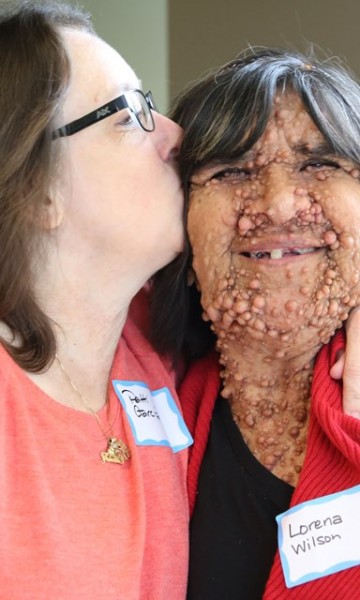News: PhD Thesis Shows Lower Resistance to Insulin in Neurofibromatosis Type 1
The following is a blog post by Dr. Luiz Rodrigues . Originally posted in Portuguese on March 1, 2017. Additions and translation were provided by Dr. Mata-Machado from the NF Clinic at Amita Health/St. Alexius.
Nutritionist Aline Stangherlin Martins publicly presented the findings of her research showing that insulin resistance is lower in people with Type 1 Neurofibromatosis (NF1). That is, they are less likely to become diabetic than the general population.
In summary, Aline recalled that it is already known that type 2 diabetes mellitus is the most common form of diabetes in the general population (90% of cases) and is a disease associated with so-called “insulin resistance.” The body’s cells with diabetes have difficulty transporting glucose from the bloodstream into the cell where it is metabolized
Aline drew from some clinical and laboratory data prior to her thesis, which raised the suspicion that type 2 diabetes mellitus would occur less frequently in people with NF1. With this, she decided to invite a group of people with NF1 to volunteer in their research, in which she measured insulin resistance and fasting glucose and studied other metabolic characteristics of these volunteers.
All participants with and without NF1 underwent an interview on their health conditions, nutritional and dietary assessment, and blood samples were collected to measure levels of glycemia, insulin, glycated hemoglobin, lipid profile, and substances called adipocytokines.
The three different types of the HOMA test (Homeostasis Model Assessment) that measure insulin resistance and the function of insulin producing pancreas cells were applied to all people. In addition, other laboratory tests completed the vision of the metabolism of volunteers, such as the relationship between Adiponectin and Leptin.
The results of the first step were obtained from 57 people with NF1 and 171 ELSA controls. Aline found lower fasting glycemia in those with NF1 (NF1: 86.0 mg / dL vs. 102.0 mg / dL for controls) as well as a lower prevalence of diabetes (NF1: 16%, controls: 63%, p < 0.001) and a lower chance of developing high fasting glycemia in the NF1 group.
In the second stage, 40 individuals with NF1 and 40 controls were evaluated. HOMA-AD was significantly lower in the NF1 group (NF1: 1.0 and control: 1.9, p = 0.003). The Adiponectin and Leptin Ratio was higher in the NF1 group (NF1: 3.8 and controls: 1.2, p = 0.003). No differences were observed between groups in relation to the other tests. In addition, all the anthropometric and nutritional measures of the NF1 group were smaller than in those without NF1: weight, height, fat free mass, fat percentage, fat mass, and body water.
Part of these results had already been published in the international scientific journal “Endocrine Connections” (see HERE).
Note: Advice or information provided here is not necessarily totally proven and not meant as medical advice. Please, consult with your doctor.







.png)





